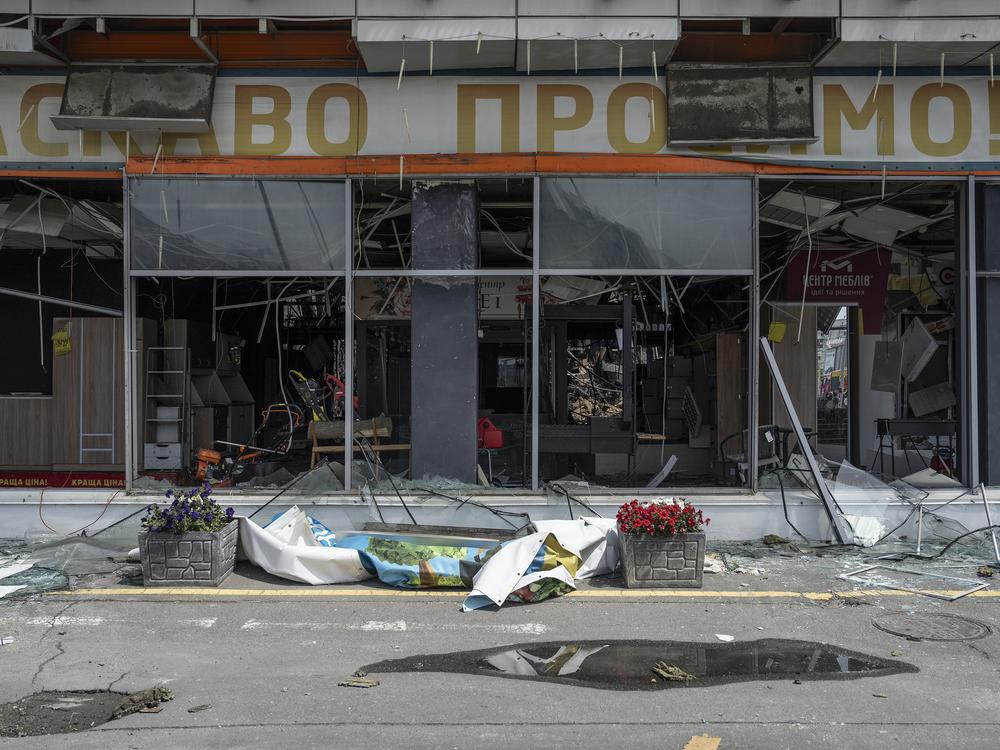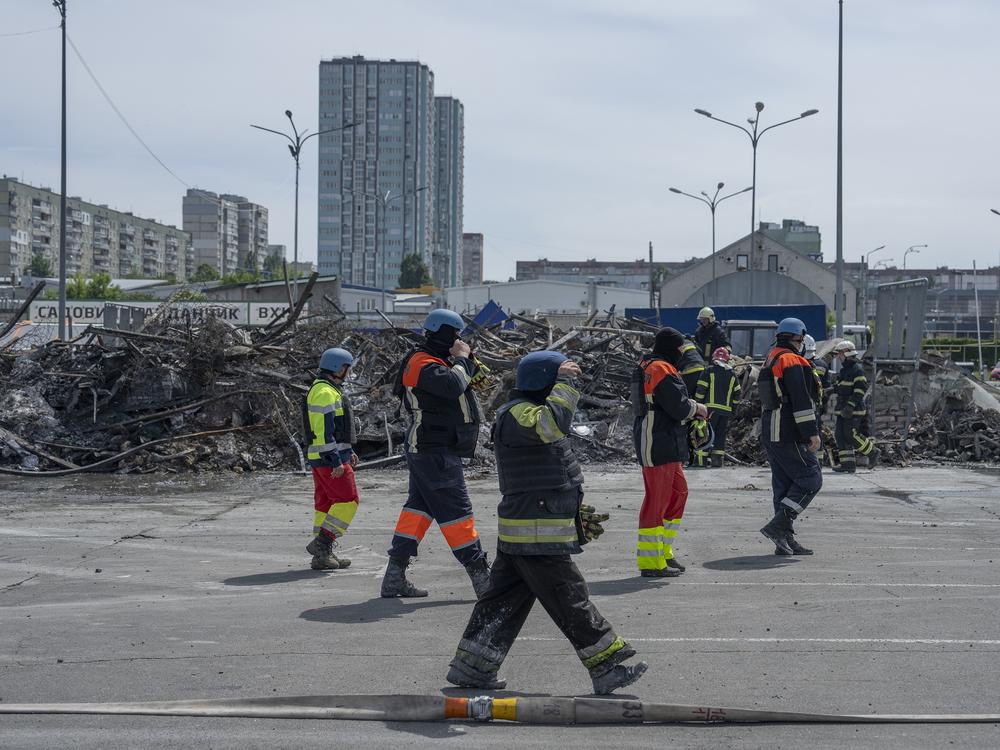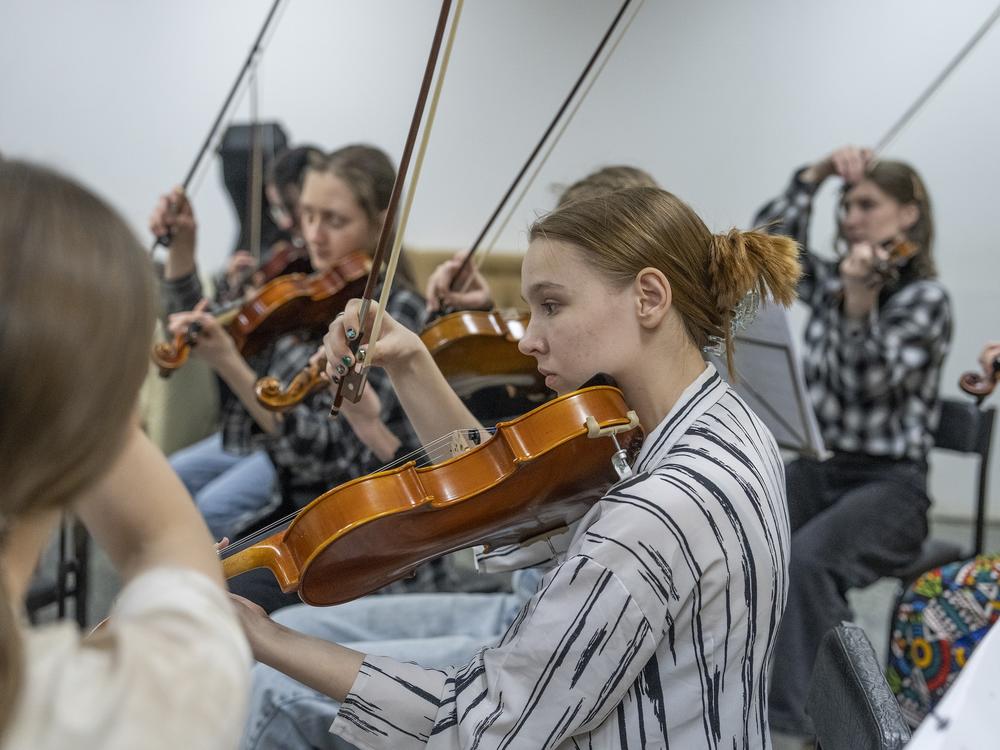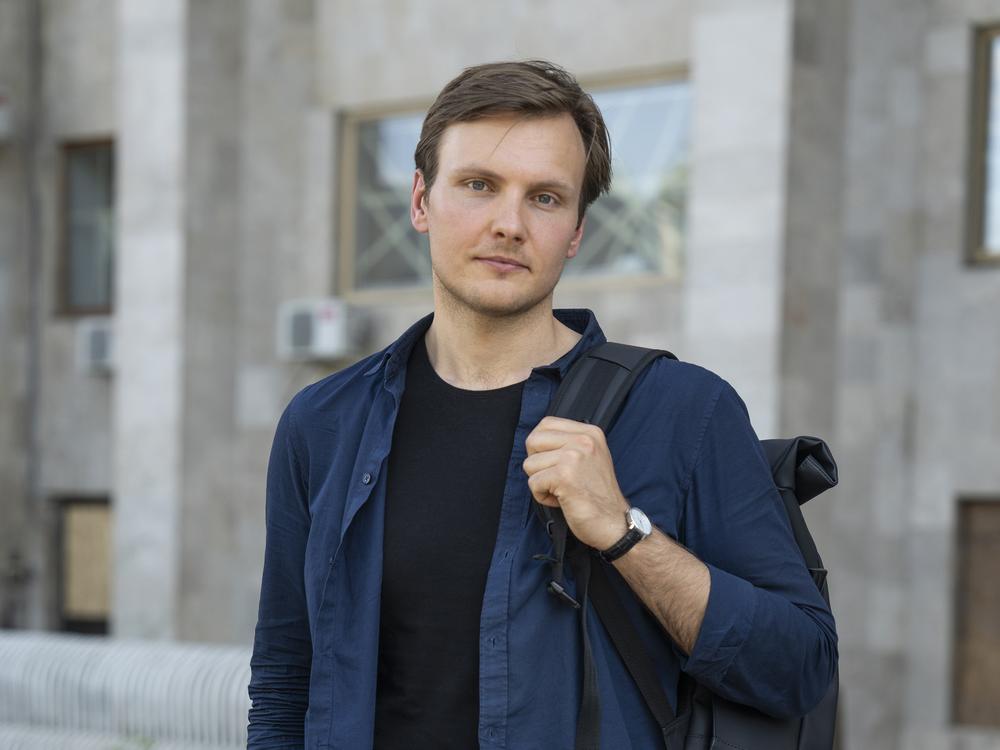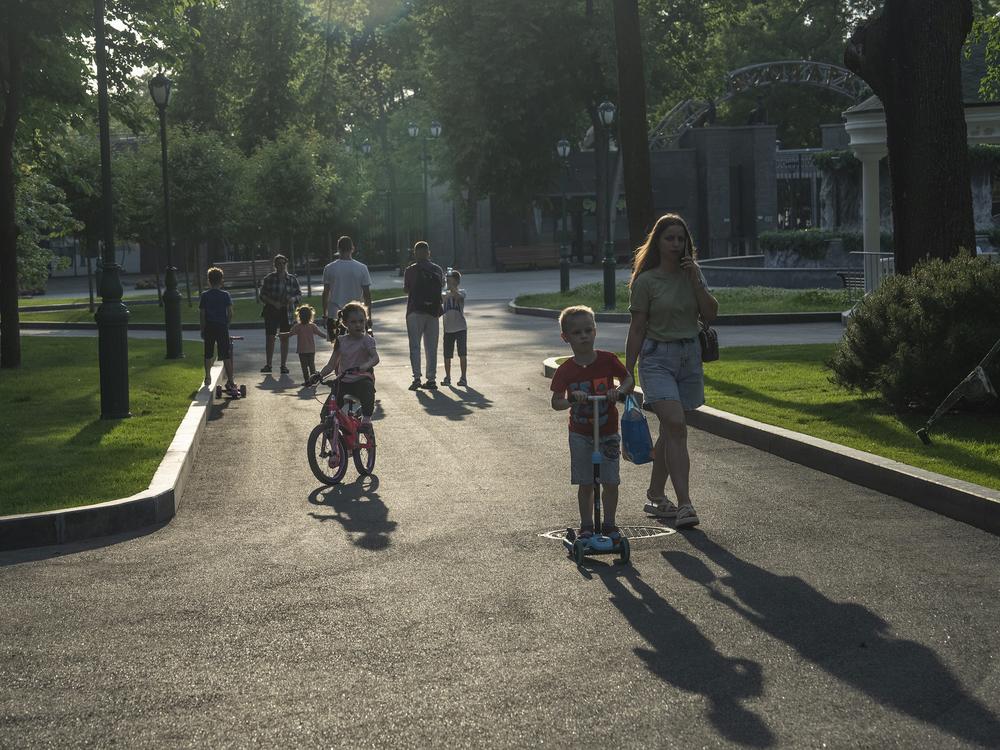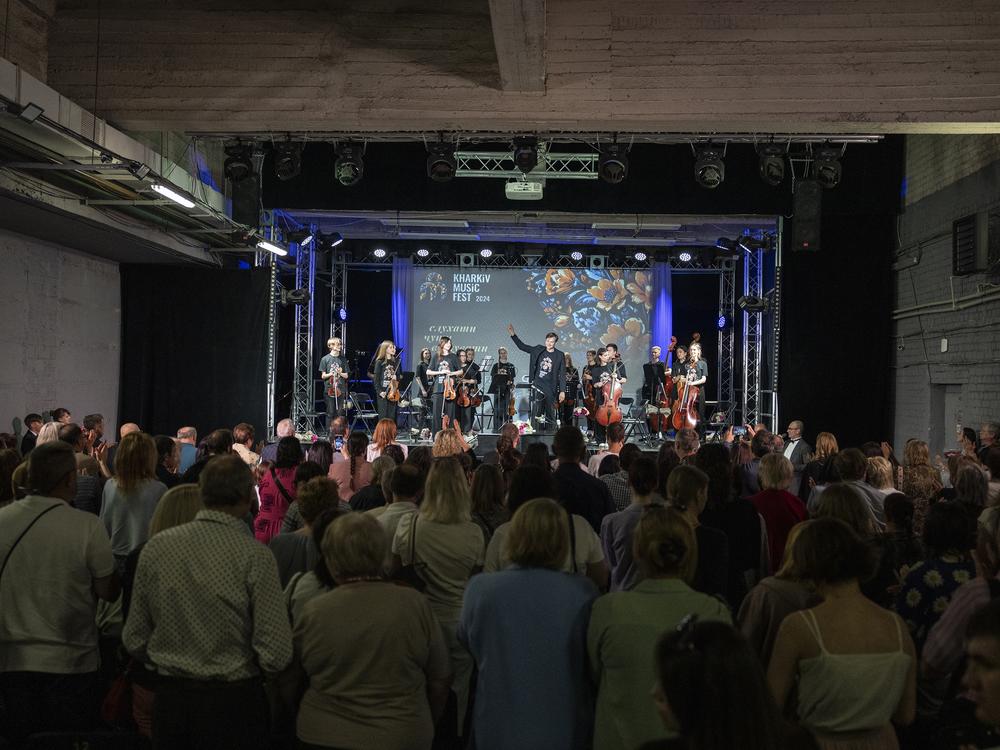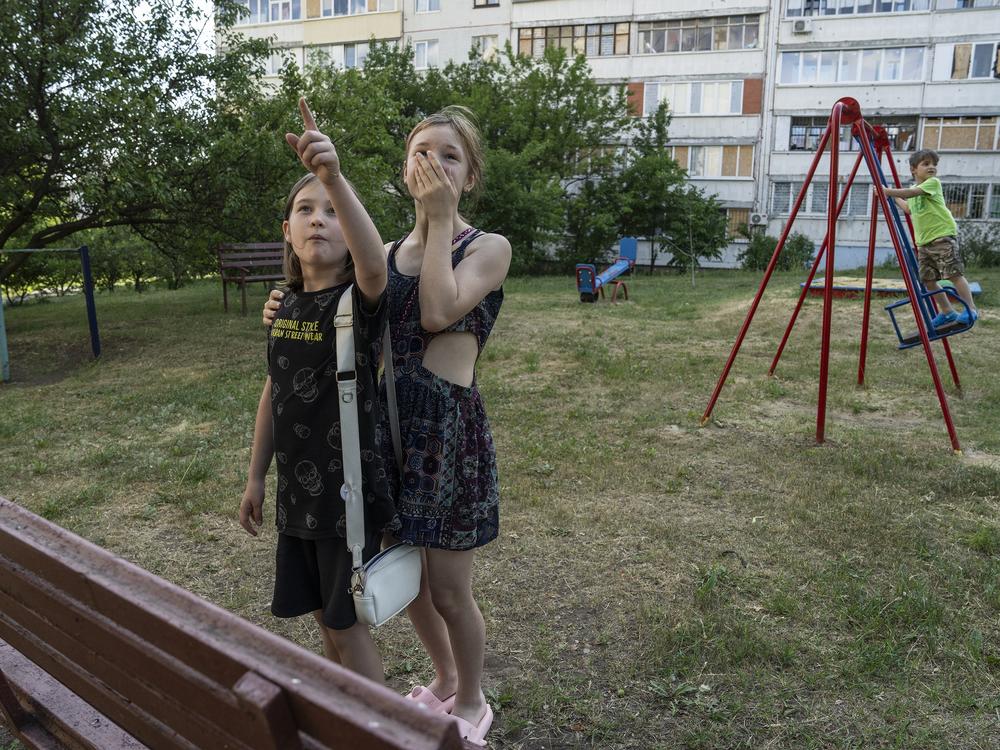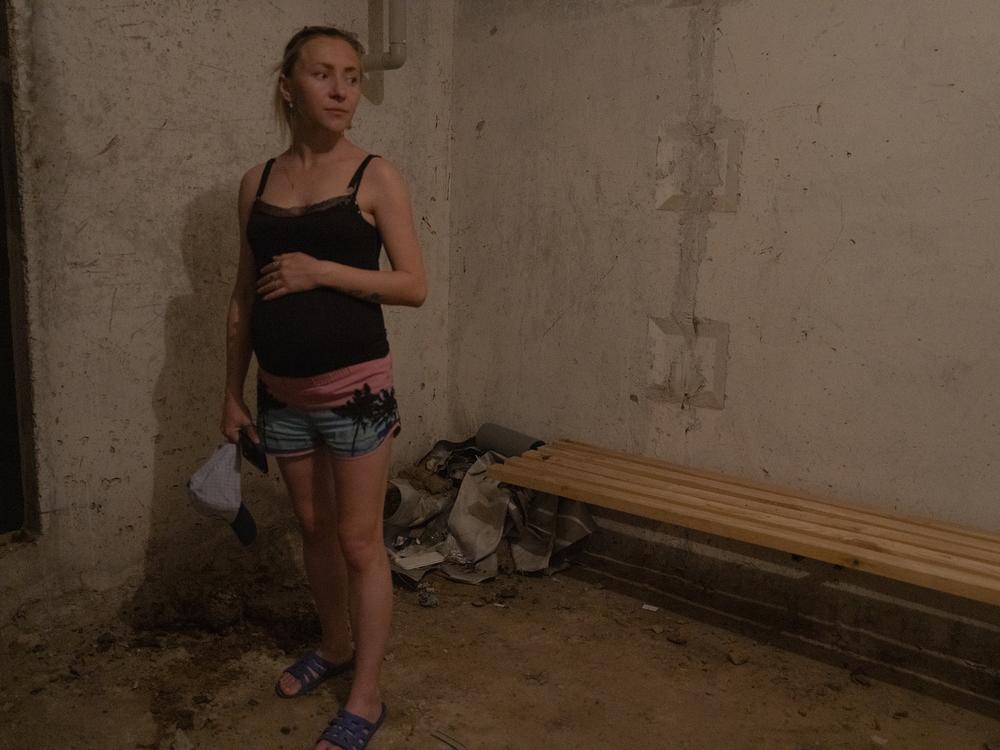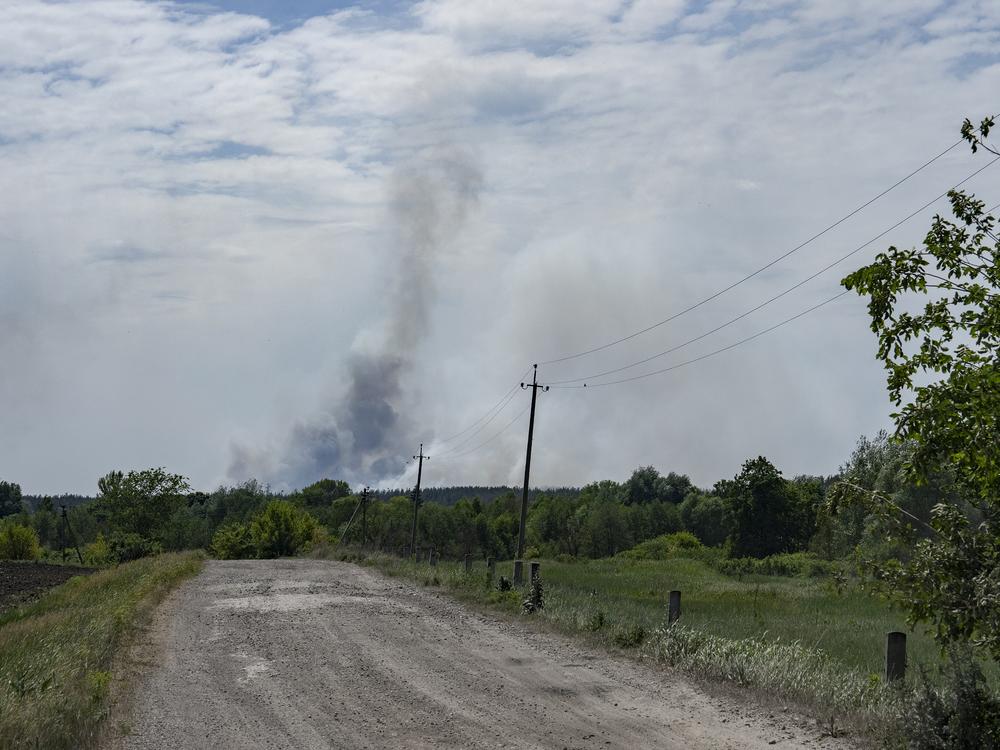Section Branding
Header Content
Ukraine's Kharkiv has withstood Russia's relentless strikes. Locals fear what's next
Primary Content
KHARKIV, Ukraine — In Ukraine’s second-largest city, May was the toughest month on record since Russia’s full-scale invasion more than two years ago. Russian forces struck the city every day, sometimes several times a day.
On May 25, Russian forces hit a home improvement shopping center in the Kharkiv neighborhood of Saltivka, killing 19 people, including two children.
Viktoria Kitsenko, 53, was reviewing wallpaper orders when a hot blast knocked her over.
“Everything was falling from above, everything was flying, all dust and fire,” she recalled. “I was just lucky enough to be near an exit.”
Kitsenko said she was used to constant air raid sirens and explosions. But she said everyone in Kharkiv felt like a target after the new offensive began.
“We didn’t even talk about it, we just accepted it,” she said. But when the strike hit her, she said, “it still felt unexpected.”
She stumbled outside, blood on her face, struggling to breathe. She thought about her daughter, who lives abroad, and her parents, who lived in the city. Her father kept calling her cellphone.
In the parking lot she saw bodies and a thick, black plume of smoke rising over her hometown.
“They want an empty city”
About half of Kharkiv’s 2 million people left after Russia’s full-scale invasion. Russian troops occupied villages and land around Kharkiv until September 2022, when Ukrainian forces pushed them out in a surprise counteroffensive.
But with Kharkiv only about 20 miles from the Russian border, the Russians never stopped bombing the city, and stepped up attacks earlier this year. In March, Russian strikes destroyed its two main power plants and network of substations.
The May offensive began after Ukraine’s military warned for months that Russian troops were building up on the border. Kharkiv’s mayor, Ihor Terekhov, said Russian forces attacked the city 76 times last month — three times more than the previous month. Dozens were killed, and scores injured.
The relentless Russian attacks on the city eventually prompted the Biden administration to lift some restrictions on using U.S.-made weapons to fire across the border at military targets in Russia.
The policy change was supposed to help deter the Russian offensive. Especially terrifying were the use of guided bombs, which Russian forces had been launching on the eastern front line to break through Ukrainian defenses. Unlike simple bombs, guided bombs have wings and tail surfaces for gliding. This allows precise targeting at a distance. Two of these bombs hit the northern neighborhood of Saltivka, destroying its branch of the Epicenter chain of home improvement stores.
Kitsenko and her co-worker, Olha Pobidash, returned to the store the day after the attack. Their boss was missing and presumed dead, along with 18 others.
“This war takes away our best,” Pobidash said.
She wondered why Western allies promise military aid and then delay it for months.
“They don’t feel what we feel,” she said. “If they did, decisions would be made much faster.”
Pobidash and her 16-year-old daughter fled to Poland early in the war, but they returned to Kharkiv at her homesick daughter’s behest.
“She kept saying, bring me back, please bring my life back,” Pobidash said. “She lives and breathes Kharkiv.”
Kitsenko said surviving the bombing changed her perception of her hometown. It no longer felt familiar. It felt dangerous.
“The Russians are trying to make Kharkiv unlivable,” she says. “They want our city, as an empty city perhaps.”
"They are fighting with music”
The constant bombings in May did not bring Kharkiv to a standstill. Offices stayed open, children studied in underground classrooms, cafes and restaurants were busy, city gardeners tended the lush, landscaped parks.
And musicians from two orchestras continued to rehearse for the Kharkiv Music Fest, an annual classical music festival.
“We are artists, and artists cannot live without a performance,” said Varvara Kasianova, the 17-year-old principal violinist for the festival’s children’s orchestra.
The musicians practiced at Kharkiv’s opera theater but not on the majestic main stage. They moved underground for safety reasons.
“I live close to the subway,” Kasianova said, “and so the way to rehearsals is also underground.”
A few days before the show, the orchestra practiced “Ukrainian Suite,” written in 1925 by American composer Quincy Porter. Vitali Alekseenok, the festival’s 33-year-old artistic director, conducted.
“The main thing about people in Kharkiv is that they will fight for their city any way they can,” Alekseenok said. “In this case, they are fighting with music.”
The conductor is originally from Belarus but has lived in Germany for several years. He traveled to Kharkiv just for the festival, as musicians from Europe and the U.S. used to do before the war. This year, nearly every musician in the festival orchestras lives in Kharkiv.
“My wife is worried that I’m here,” he said. “But now I’m in the Kharkiv state of mind. You might be dead in a moment, but until then you keep working, you keep creating.”
During a break from rehearsal, Alekseenok walked to a busy park nearby. Families shared ice cream sundaes, a teenage dance troupe practiced a routine, and grandmothers chatted on wooden benches, under a canopy of trees.
Suddenly, two air raid sirens went off — a sign of heightened danger. Kharkiv is close enough to the Russian border that some missiles arrive in minutes. When the air raid siren goes off, it’s often too late to go to the bomb shelter.
No one in the park left, including Alekseenok.
“It’s always like this,” he said.
Soon, the conductor returned underground to lead a rehearsal of the music fest’s professional orchestra. It’s been shrinking since the war began. There used to be 20 bassoon players.
“Now we have zero,” Alekseenok said. “And we don’t have a tuba player because three, four days before the rehearsal started, he was mobilized. Now he’s going to fight.”
An underground arts fortress
The Kharkiv opera theater was damaged in a Russian attack early in the war. Its leaders created what they call an "arts fortress" in the corridors and spaces under the building.
The week of the performances, concertgoers arrived in droves, some dressed in gowns and suits. They went through security checks, then followed a labyrinth of corridors to reach the wartime stage underground.
The orchestra of adults performed first, playing Johannes Brahms’ Symphony No. 2 and a concerto for violin and orchestra by Sergei Bortkiewicz, a Kharkiv-born conductor of Polish descent. The featured violinist was Mykhailo Zakharov, who was also born in Kharkiv but has lived in Austria for 20 years. Zakharov returned to his hometown during one of its worst weeks just for the performance.
“I can’t tell you how wonderful it feels to be here right now, making music in Kharkiv,” he said, embracing the musicians and members of the audience after the show.
A couple of days later, two Russian missiles hit an apartment building in Kharkiv, destroying the fourth and fifth floors while families were sleeping.
The neighborhood soon filled with the sounds of sirens and firehoses. Terekhov, the mayor, arrived to comfort those waiting for word on their loved ones. Police held back a sobbing man crying out for his wife and daughter.
A few hours later, the children’s orchestra brought the audience to their feet in a rousing standing ovation.
Varvara Kasianova, the principal violinist, said the performance felt like an act of resistance in a city under siege.
“It filled us with confidence and strength,” she said.
“They hit us everywhere”
Meanwhile, across the Atlantic, the White House announced that it would finally allow Ukraine to fire U.S.-provided weapons into Russian territory.
The U.S.-based Institute for the Study of War (ISW) said on June 1 or 2 Ukraine likely struck a Russian S-300/400 air defense battery using an American-supplied HIMARS rocket system. The ISW said the Russian air defense system was located about 50 miles from Kharkiv.
In the Saltivka neighborhood in Kharkiv’s northeast, the strikes continued. Svitlana Poznikina, a 55-year-old pastry shop worker, lives in a Soviet-style high rise apartment pockmarked by shelling.
“A lot of people have left the neighborhood,” she said. “Half of the houses are empty. In my apartment building, it’s only retirees who have run out of money and have nowhere to go.”
Russian forces pummeled Saltivka’s high-rises, markets and parks as they tried to occupy Kharkiv at the beginning of the full-scale invasion in February 2022. They have struck it repeatedly after launching the new offensive early last month.
Near a boarded-up apartment building, five children run around a playground and pick fruit from a neighborhood cherry tree. Their mother, 31-year-old Tetiana Kovalenko, is pregnant. She said she and her family spend nearly every night in the bomb shelter.
During the day, she says, “they hit us everywhere. We live on the 16th floor, so we can see what comes in and where it hits.”
To stay or go
On June 10, the Institute for the Study of War wrote that the White House’s policy change permitting Ukraine to strike across the border from Kharkiv with some U.S.-provided weapons had reduced the size of Russia’s ground sanctuary by no more than 16%.
“The U.S. policy change, while a step in the right direction, is by itself inadequate and unable to disrupt Russian operations on a large scale,” the institute wrote.
Russian forces continue to strike northeastern Ukraine this month, though not as often. Kharkiv’s mayor told the Ukraine Recovery Conference in Berlin on June 11 that life is “calmer” since Ukrainian forces were able to target missile launchers in Russia. Ukrainian president Volodymyr Zelenskyy said his forces are gradually pushing Russian troops out of the Kharkiv region. Russia, meanwhile, claims it is advancing.
Kitsenko, who survived the attack on the shopping center, said she found it too stressful to continue living in her hometown.
She is now in western Ukraine. She’s not sure she will return to Kharkiv.
NPR producer Hanna Palamarenko contributed to this report from Kyiv, Ukraine.
